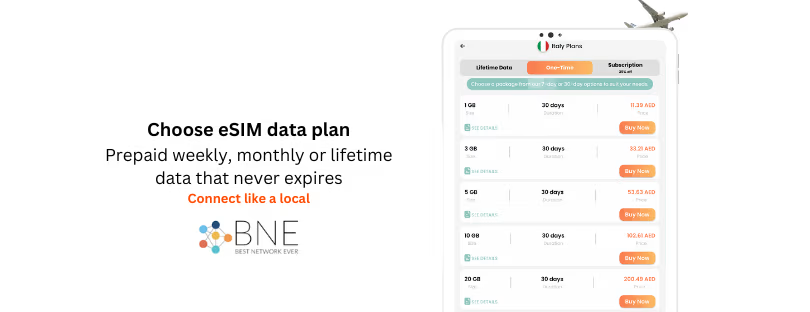
5G Roaming Gone Wrong: What Travelers Need to Know About ‘Invisible’ Charges in 2025
If you’ve ever stepped off a plane, turned your phone on, and received an unsettling text message about roaming charges, you’re not alone. By 2025, most of us assumed the worst of these surprise fees were a thing of the past. We thought that smarter phones, smarter networks, and smarter consumers had finally solved the problem. Yet here we are, still dealing with mysterious “invisible” charges—only now they’re sneakier, triggered by automatic 5G network switching. And for eSIM users, the landscape is even trickier.
So let’s break it down. Why is this still happening? How does 5G factor into it? And most importantly, what can travelers do to protect themselves from unexpected roaming bills?
1. The Promise of 5G vs. the Reality of Roaming Charges
When 5G started rolling out globally, it promised blazing-fast speeds and seamless connectivity. For travelers, this sounded perfect: download-heavy apps running without a hitch, video calls that didn’t cut out mid-sentence, and the freedom to stay connected just like at home.
But what’s often left unsaid is how your phone connects to those 5G networks while you’re abroad. It’s not as simple as flipping a switch. Most modern smartphones are set to “automatic network selection,” which sounds convenient, right? In reality, this setting can lead to trouble. Your phone will latch onto the strongest available signal, often without you noticing. If that signal happens to be a network that isn’t covered by your roaming package—or one that charges extra for 5G—you could rack up costs without realizing it.
2. The Sneaky Costs of Automatic 5G Switching
This is where the “invisible” charges come into play. Picture this: you’re in a country that supports multiple 5G networks. One moment, your phone is connected to a provider that’s included in your roaming plan. The next moment, you’ve moved down the block and your phone automatically switches to a stronger 5G signal from another carrier. You don’t get a warning. You don’t have to click “yes” or “no.” It just happens.
Now imagine that the new network isn’t part of your data package. Maybe it’s a premium 5G network that comes with a hefty surcharge. You keep browsing, streaming, and uploading your travel photos, unaware that each megabyte is costing far more than you think. You only find out later—days or weeks after you’ve returned home—when you open your bill and see a total that makes your jaw drop.
3. Why eSIM Users Need to Be Extra Cautious
eSIM technology was supposed to simplify things. Instead of swapping out physical SIM cards every time you travel, you can load multiple profiles on a single device. In theory, this should help you choose the most affordable roaming option.
But here’s the catch: eSIM users often rely on their phones to handle network selection automatically. And just like with a physical SIM, that automatic switching can lead to unexpected costs. If you don’t carefully manage your eSIM profiles or double-check which network your phone is using, you could be caught off guard by the same “invisible” 5G charges. In some cases, having multiple eSIM profiles might even make the problem worse. If your device toggles between profiles or networks without alerting you, you might end up paying for more than you bargained for.
4. Real-World Examples: Where 5G Roaming Goes Wrong
To illustrate how this plays out, let’s look at a few common scenarios:
- A busy layover in a multi-network hub: You’re in an airport known for having multiple carriers, each offering 5G. You’re rushing between gates, and your phone seamlessly hops to a stronger 5G network that isn’t included in your plan. You didn’t make a call or send a text, but the background data usage on that network means you’re billed a premium rate.
- A remote location with a single 5G provider: In rural areas, there may be only one 5G provider. If your phone connects to it without you realizing it’s not covered by your roaming deal, you’re still on the hook for those charges.
- Cross-border travel in Europe: While EU regulations have reduced roaming costs, they haven’t eliminated them entirely—especially if you accidentally connect to a network from a neighboring non-EU country. A quick hop across a border on your 5G-enabled device can lead to unexpected fees, all because your phone’s network switching went unnoticed.
5. Tips to Avoid 5G Roaming Surprises
The good news? You don’t have to be a victim of these invisible charges. By taking a few proactive steps, you can outsmart the system and keep your bill in check:
- Manually select your network: Instead of leaving your phone on automatic network selection, choose a network that you know is included in your roaming plan. This might feel old-school, but it gives you full control.
- Monitor your eSIM profiles: If you’re using an eSIM, double-check which profile is active. Make sure you’re on the profile that offers the best coverage and rates for your destination.
- Turn off 5G when unnecessary: If you’re in an area with sketchy 5G coverage or unclear roaming agreements, consider switching your phone to 4G LTE or even 3G. Yes, the speeds will be slower, but it might save you from a financial headache.
- Keep data usage minimal until you’re sure: Before streaming videos or uploading tons of photos, confirm that you’re on the right network. Use Wi-Fi whenever possible—most airports, hotels, and cafés have decent Wi-Fi these days, which can help you avoid roaming charges altogether.
- Check your roaming plan details in advance: Before you leave home, contact your provider and ask them exactly which networks and regions are included in your plan. Make a note of their names so you can recognize them if you need to select them manually.
Final Thoughts: Taking Control in 2025
It’s frustrating to still be talking about unexpected roaming charges in 2025. With all the advancements in technology, you’d think the problem would have been solved by now. But the reality is that mobile networks and billing systems remain complex, and travelers need to stay vigilant.
By understanding how 5G roaming works and taking the steps to manage your network connections, you can outsmart these invisible charges. Whether you’re using a traditional SIM or an eSIM, the key is awareness. Know your plan, keep an eye on your network, and never assume that automatic switching will work in your favor.
The promise of 5G may be fast speeds and easy connectivity, but it comes with responsibilities. As long as you’re proactive, informed, and in control, you can enjoy the benefits of 5G without falling into the trap of hidden roaming fees.











